From our Umny offices in Vancouver today, we are watching our thermometers creep up in temperature every minute, as our city faces yet another heat wave.
Weather forecasts from all around the world are rising as if they’re on the same inflation trend as our gas prices are. We read about the research from academics like Professor Marianne Touchie who measure the devastating human cost of buildings that fail on these extreme heat days.
It’s inevitable that the “global warming” that’s been measured for decades will lead to a desperate need for “global cooling” to cope with our increasingly extreme climates.

How do we keep ourselves cool, without making things worse in the long run?
Passive Cooling, The Individual’s Approach:
No matter how amazing the inventions of brilliant minds around the world are for renewable cooling systems, every individual also needs to be equipped with ways to reduce their home’s temperatures by a few degrees. When power shortages happen, we still need to be able to cool off.
Unfortunately, advancements in building technology are not universally or equally applied – the majority of individuals live in buildings that have already been built, and were built quite a long time ago with older technology. In Canada, many of our buildings don’t have any forced air ventilation or cooling systems.
When to open windows:
So, naturally we open our windows to try and catch a breeze.
As someone with a passion for modelling flow and heat transfer in fluids like air, I have made models of rooms in my home to see how far this air might travel from my window through the rooms. In some cases, this works to cool down the house, and sometimes it doesn’t.
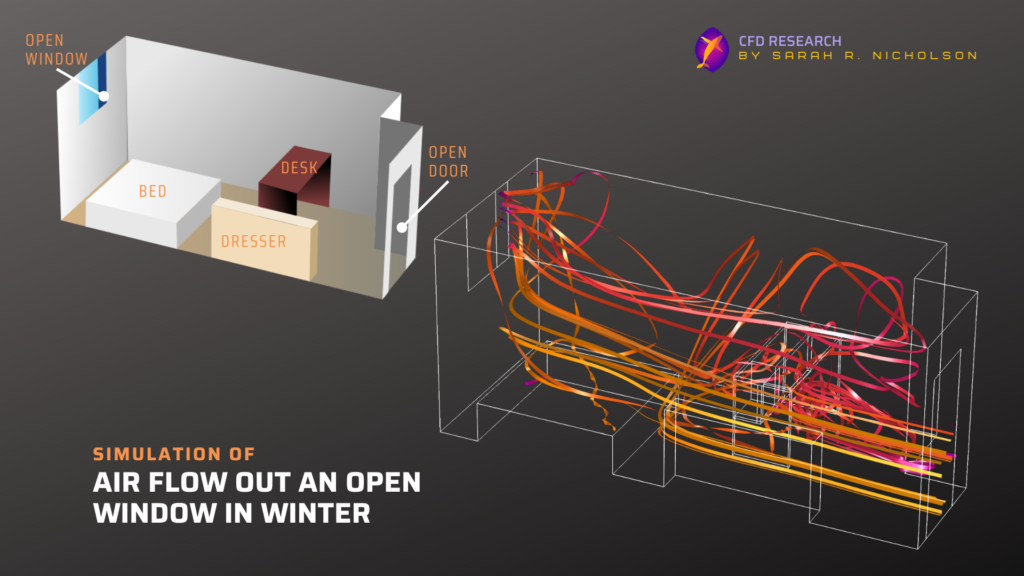
Here are some tips for using your windows for cooling:
- Open the window if there is a noticeable wind into your room (positive pressure pushing the flow inside) AND the outside air temperature is cooler than your indoor temperature.
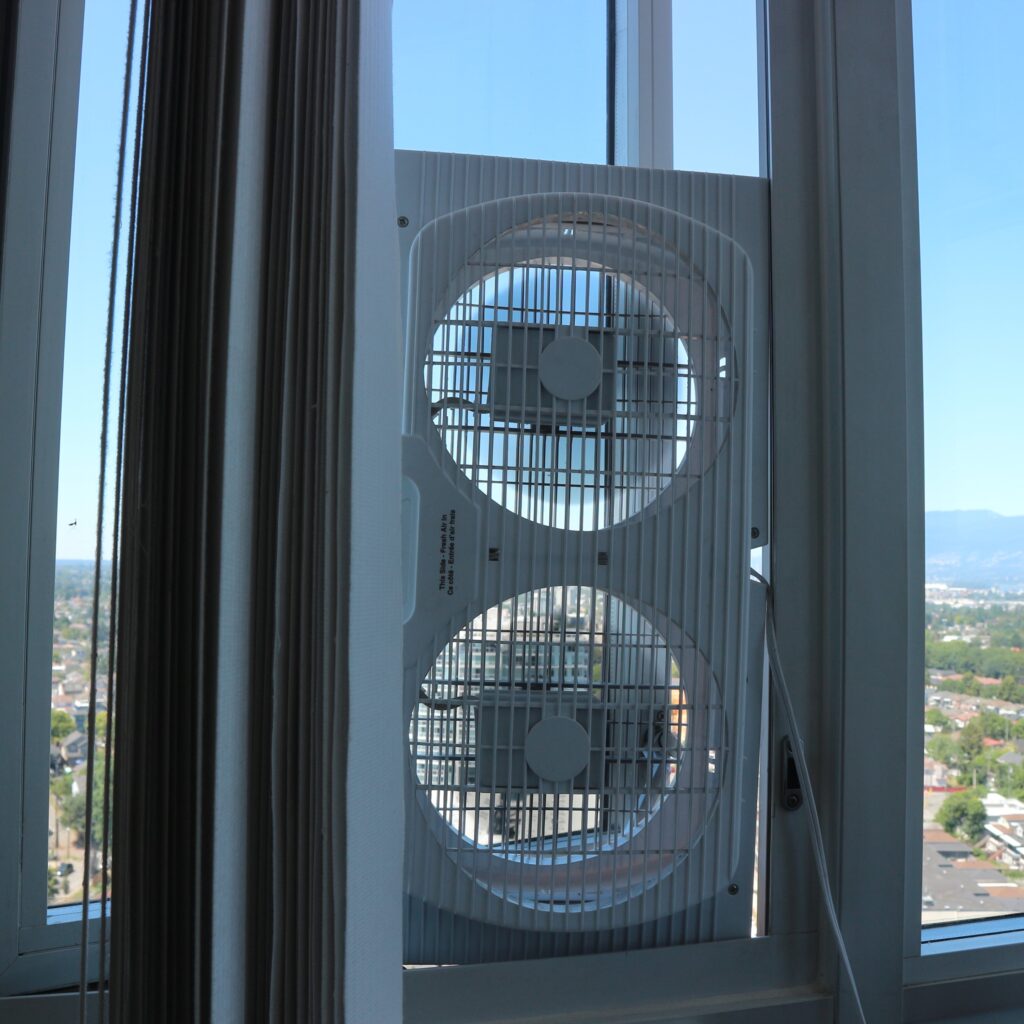
To really flush your home with this cool fresh air, you can add a window fan to blow it in and/or turn on a bathroom fan to suck out the hot air within your home.
Generally, these conditions will happen when the sun is not directly on the window side of the building. Doing this overnight will usually provide the most cooling.
- Close the window if there is no noticeable wind or it feels that the wind in your room is escaping out the window (which will happen if it is colder inside than outside) AND/OR the outside air temperature is warmer than your indoor air temperature.
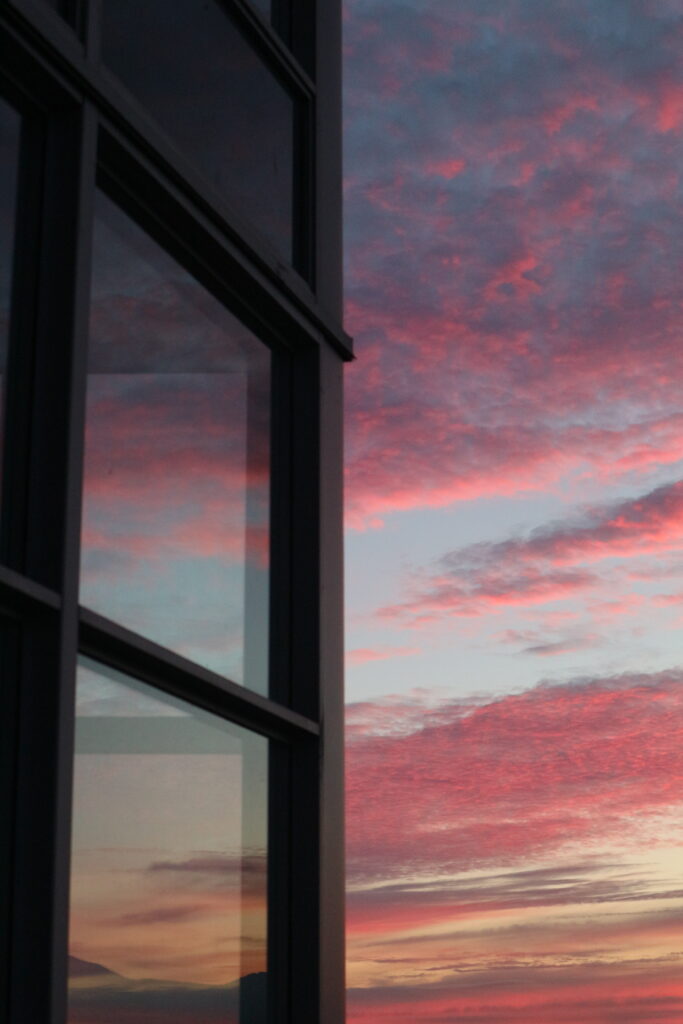
If you live in a multi-unit residential building that doesn’t have forced air, it is likely that your fresh air is supplied through the hallway and pushed under the door gap to fill your home. If this hallway air is cooler than your home’s air, then it will benefit you to encourage this pressure difference (and get as much from the hallway as possible). Closing your windows will reduce an “airflow standoff” with the hallway air (which could stagnate the air in your home).
Generally, these conditions will happen when the sun is not directly on the window side of the building. Doing this overnight will usually provide the most cooling.
- You can further control this by turning on a bathroom fan to encourage more air to flow into your home from under the door – and by removing any obstacles from the doorway to your living space.
- Generally, this form of passive cooling is not very effective, and buildings are no longer being designed this way.
Closing your windows as soon as the sun is up, or if you know it will become warmer requires active management on your part. Some companies are building automatic systems to open and close windows and vents with the logic described above, but an individual can do this themselves as well.
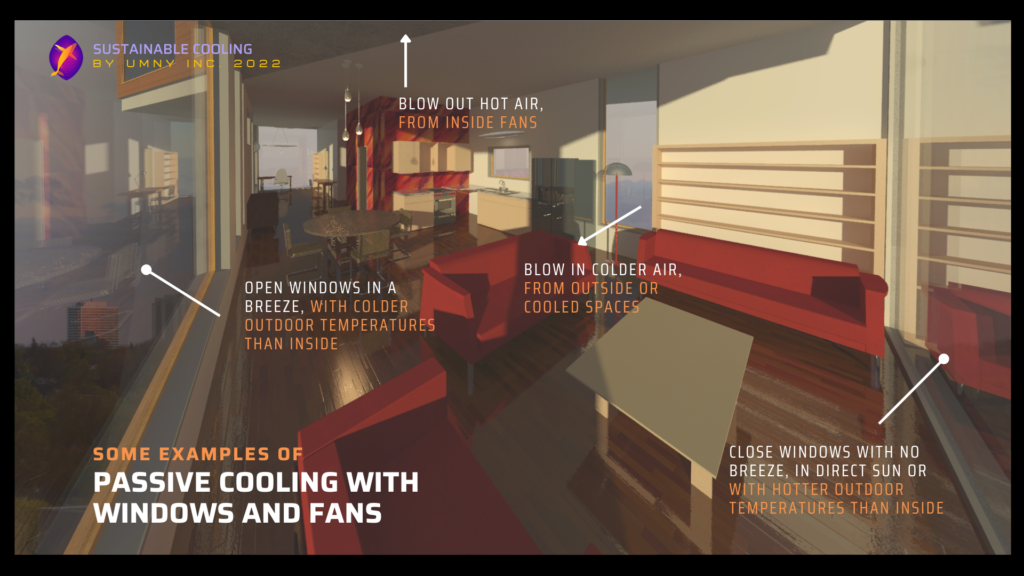
How to use curtains to your advantage:
Solar heat gain is the primary reason for our increasingly hot days. The sun’s rays are incredibly powerful at heating up our air and building materials. Luckily, we can block some of this warming with shades and insulation.
Although the recent widespread trend of buildings with glass walls has given us great views and increased natural lighting, it also makes us vulnerable to increasing air temperatures. The sun passes through our windows and warms up our air extremely quickly – every system we use to cool our space is competing with this warming.
This is mostly because the glass in windows is usually more conductive than the materials and insulation that walls are made of. We can improve the resistance of our windows by adding materials (such as curtains) to insulate against the heat gained from the sun.
Here are some tips for using your curtains for cooling:
- Close the blinds if there are direct sun rays coming through your window AND/OR if the air outside your window is much hotter than the air inside.
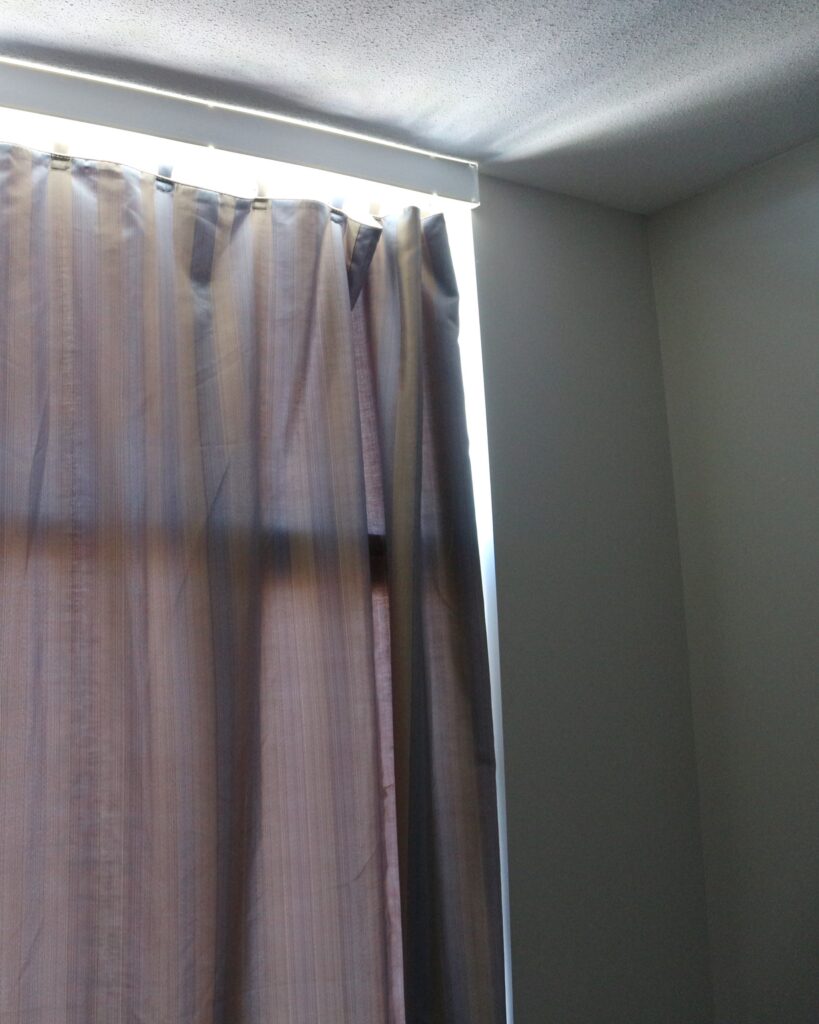
Having thick fabric such as blackout curtains can insulate your room from the heat of the sun. You will know they are working well if you feel hot glass on the window, but cool fabric on the back side of your closed curtain.
For even greater advantages use exterior shading: putting up curtains on balconies and awnings in front of windows, or using plants or fences as an exterior shade to reduce the sun’s rays from reaching your building.
- Keep in mind that if you are installing a permanent shade, and you live somewhere that has winter, you might be losing out on heating from the sun that you will actually want. That is why modern shades are designed at angles to only block high rays from summer sun, but let in lower rays from the winter.
- Open the blinds if the outside air is cooler than your interior air AND there are no direct sun rays on your window. This will reduce the insulation value of your windows and drive heat exchange that moves hot air from your house to the surface of the glass and then out to the outside air – it is like making your walls thinner again to become closer to the cooler air temperature outside. Generally, opening blinds at night on walls that DO NOT face the rising sun can help provide some passive cooling.
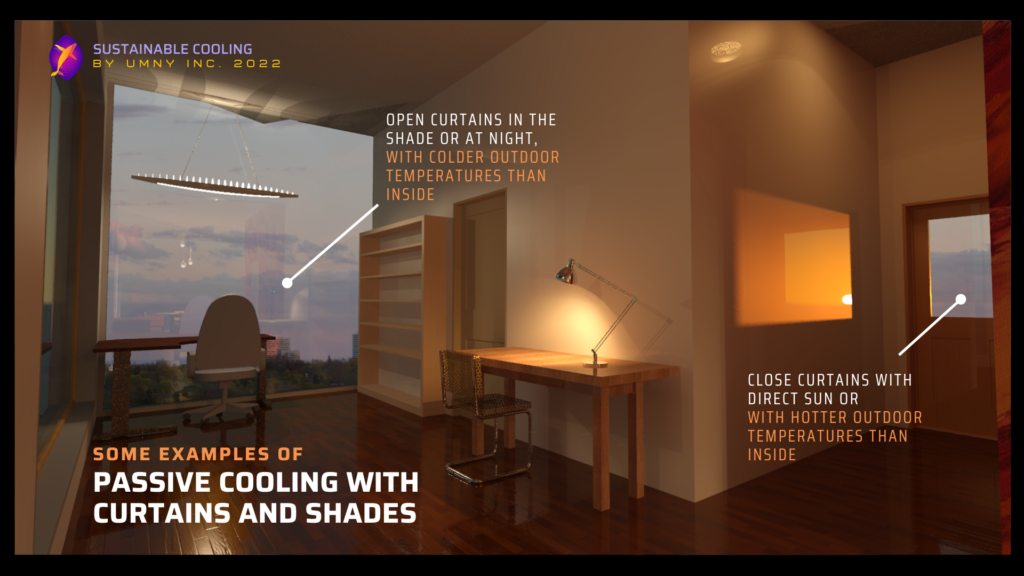
Avoid generating heat inside:
While much of summer’s heating comes from the sun, we also generate heating inside our homes through many of our everyday activities. It’s best to completely avoid or time these activities for the night or early morning to reduce internal heat gain when the sun is also warming us up the most.
Examples of heat generating activities:
- Using electrical equipment such as computers, non LED lights, and TVs (especially high powered ones or those that are very old)
- Drying or washing anything with heat such as laundry or dishwashers
- Cooking/baking with heat (especially if using the oven) and boiling water
- Any form of combustion (burning fuel) for light or generating electricity
- Giving our fridges/freezers a lot of work to do by trying to cool warm or hot food inside of them: for example, to create ice for a cold drink on a hot day, the freezer has to move all of the warm energy out of the water (until it freezes) and into our rooms – which makes our interior even warmer
- Hot water showering, blow drying hair, using curling irons or straighteners
- Excessive exercising, or having many people within a space
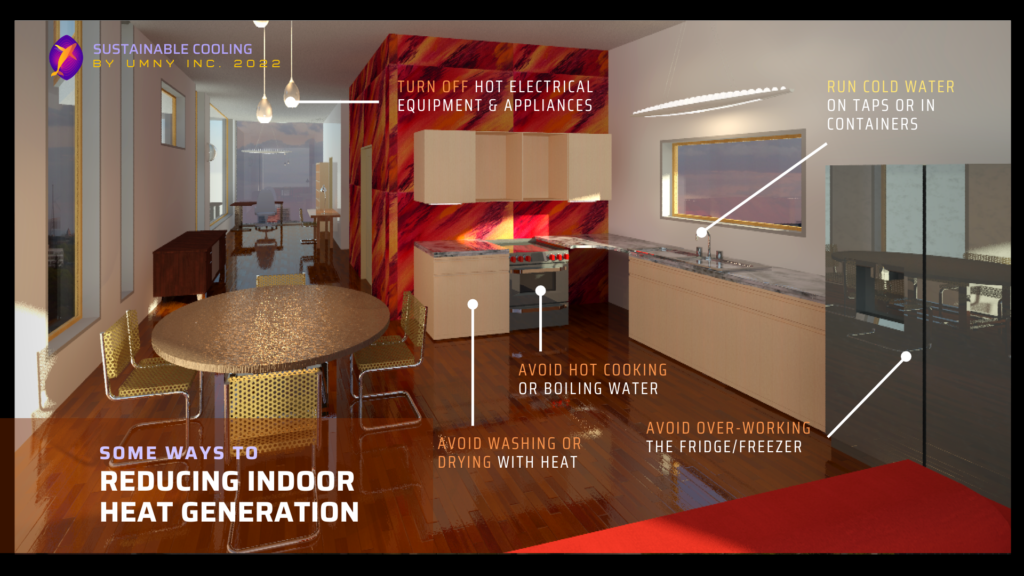
Cooling with water:
On really warm days, we can use water from our taps and showers to offer some cooling. If you have the luxury (as many of us do in Canada) of having a large supply of cool water (regardless of the quality of that water), then you can use this to take out some of the heat from your air. Keep in mind that this will increase the humidity in your air.
Here are some tips for cooling with water:
- Turn on a cold shower or tap to allow the air to exchange some heat with the water as it flows down the drain (you can also block the drain). As this method can waste a lot of water, I try not to use it unless I’ve exhausted every other method
- Fill up the bathtub or containers with cold water to passively exchange heat with this volume of liquid and your room (when the water gets to room temperature that means its cooling energy has been used up, and you should drain it)
- Use bowls of ice with a fan for more cooling. However, if you are making this ice regularly from your freezer, keep in mind that this will be generating heat within your home
- Take cold showers, cool yourself and your family/pets with cold wash clothes
Mechanical Cooling, The Traditional Approach:
Obviously, the most noticeable cooling comes from mechanical equipment installed in our homes. Traditional air conditioners, ventilation systems, and rooftop units all can be used to cool air and keep our room temperatures in the comfortable ranges.
Many people working in commercial buildings will feel the advantages of having large cooling units dedicated to keeping the interior cool, no matter the extreme weather outside. Even on hot days, there are business people wearing suits because they are able to access these artificially cold interiors.
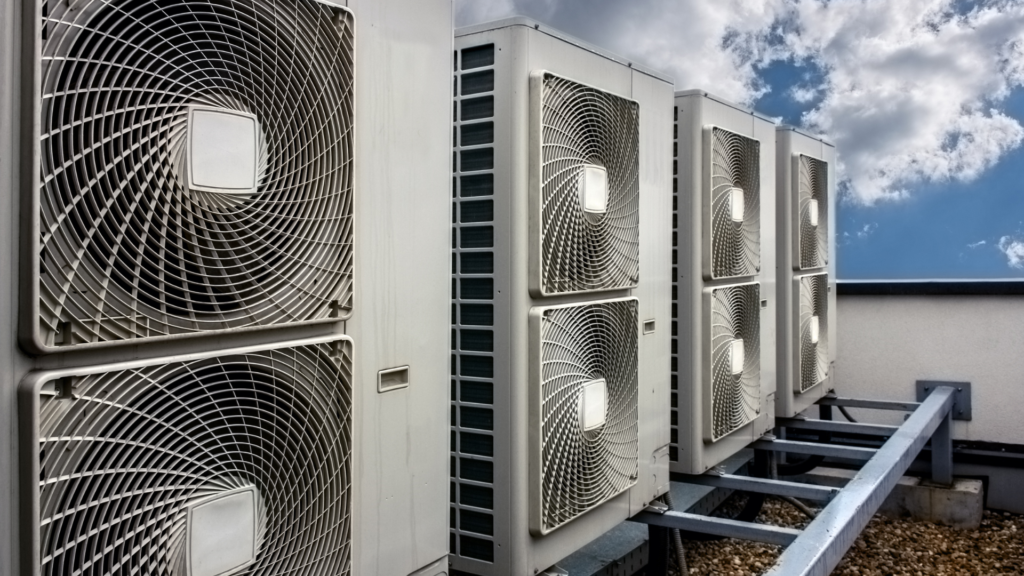
Cooler inside means hotter outside:
However, a drawback to these traditional cooling sources is that the majority of them simply move the heat from inside the building to the nearby air outside of the building.
Cooling cannot be “generated” like electricity, it is limited by the laws of thermodynamics. To get cooling, we need to move heat out of the space. Almost all of the mechanical methods for cooling capture heat from an indoor space, transfer it through their working fluid loops (usually a refrigerant) and then dump that heat outside.
If you were to walk beside the outdoor units for this equipment you would feel this heat (in the same way that the area around a fridge feels hot).
Even equipment that is considered by many to be our most renewable source of cooling yet, the air source heat pump, uses this method of taking heat from inside and dumping it into the air outside. Also, in extremely hot air, these ASHP units do not work because heat cannot flow in the desired direction.
Not considering all of the heating and climate damage effects caused by this traditional mechanical equipment (such as increased energy use which make electrical wires sag and start forest fires – further contributing to global warming), the local effects of these cooling machines are also contributing to local heat islands.
If we are going to address the needs of our global population that is suffering through these heat waves with the same cooling equipment we’ve always used – we are going to contribute to warming up the air around us even more.
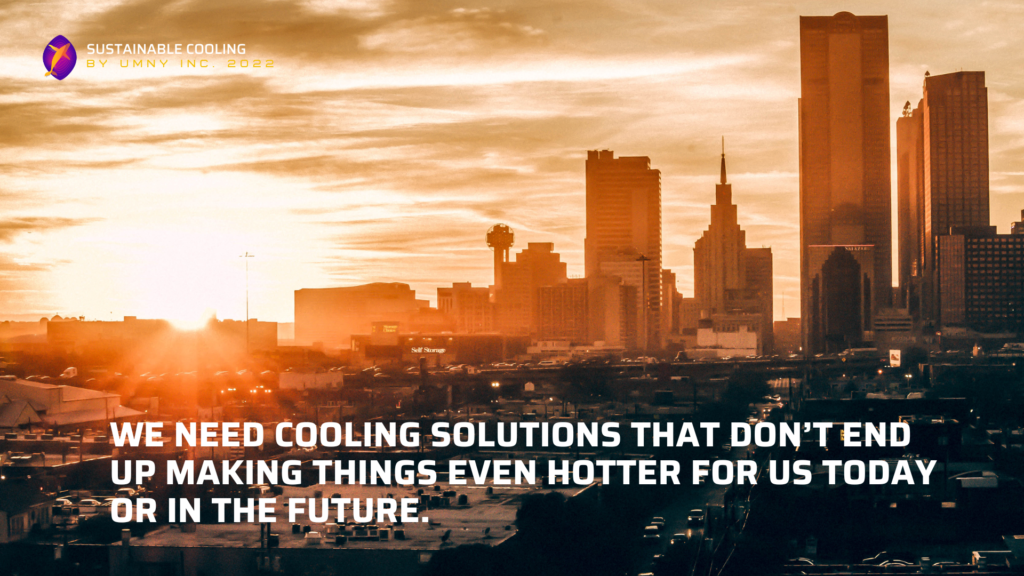
Sustainable Cooling, We Need to Think More Long-term
Though our need is urgent – there are people that are dying today as a result of becoming too hot – we need cooling solutions that don’t end up making things even hotter for us today or in the future.
We need to build and retrofit buildings to be heat resilient:
To reduce our homes becoming ovens – especially in the multi-unit residential styles (where heat rises and collects from all of the units into the upper levels) – we need to build them more resiliently against unwanted heat gain.
This includes the use of new technology and innovations such as high-performance windows and exterior/interior automatic shading, and energy recovery ventilators (ERVs or HRVs). But it also includes the use of more low-tech solutions such as green walls/roofs, passive ventilation (allowing more units to have crossflow instead of all the windows on one end), and better overall insulation.
Individual dwellings can take advantage of the natural cooling of the wind and ground, and be built in passive house or earthship styles. Construction with ceramic materials (cement, mud, clay, cob: materials with high thermal mass) which don’t heat up in the day as quickly as wood or metal is another resilient technique that is often used in the cement homes of people who have been living in hot climates for centuries.

We need to move heat away from where we live:
The only realistic, sustainable, long-term intervention in the overheating of our indoor spaces (beyond changing the climate itself) is to move this heat far from where we live, and in a way that doesn’t require increased energy use.
Luckily, the answer is right below us.
The ground is an excellent source of insulation, that can absorb large amounts of heat from the sun without noticeably affecting the temperatures we feel. With carefully designed ground heat exchangers, we can move the heat from inside our houses and structures into the ground (something we call Earth Conditioning). These systems may use traditional equipment, but they can even be designed without the need for refrigerants or heat pumps. They can be built for small and massive scale projects – and because they use natural energy transfer underground, they require very little energy input.
In the summer, the ground below the surface is typically much cooler than the air around us. By transferring our excess heat below ground, we can cool our above ground spaces without leading to urban heat island effects – or local heating around our roofs and buildings.
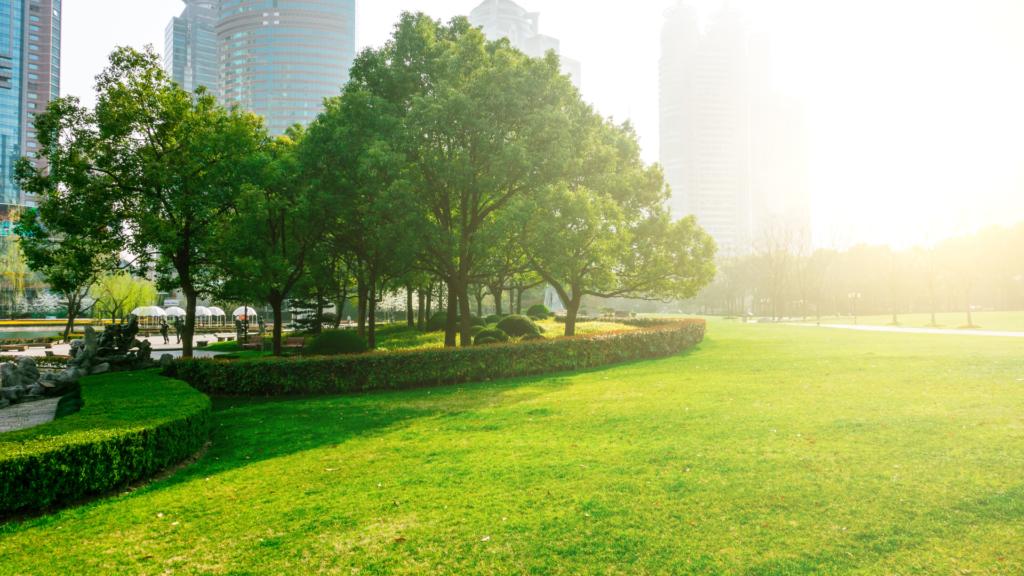
Another option is to put this excess heating into bodies of water, which are also able to absorb more heat than the air. However, this option has the potential to negatively impact the environment, and when anti-freeze is used in the fluid it can cause damage to our water quality.
We can’t overdo it:
When we store this heating energy in large bodies of water or the ground – we risk overheating these natural thermal batteries. There have been stories of geothermal (geo-exchange) systems that have turned the ground to solid clay in southern USA because they put too much heat from their buildings into the ground and baked it solid.
There is some research showing that changing the temperature of the soil can change the types of bacteria-consuming microorganisms that grow in it, and it is obvious that we cannot solve our problem by only burying all of the excess global warming in the ground of our planet.
Actually, in large areas of the world, we need the ground to stay cold to protect the stability of permafrost. In these cases we can actually use geo-exchange to extract this excess heat for usable energy.
At Umny, this is something we research and build AI tools for. Contact us for more information.
We can balance seasonal energy:
Using the ground as a thermal energy storage for the heat that we will need in other seasons (or in other ways throughout the year) is a truly sustainable way to think about cooling. We can heat up our soil in the summer while cooling our homes – and then take out this excess heating from the ground in the winter to heat our homes. For locations that don’t have winters, we can also use this extra ground heat to warm up water for domestic or industrial use, or even to generate electricity.
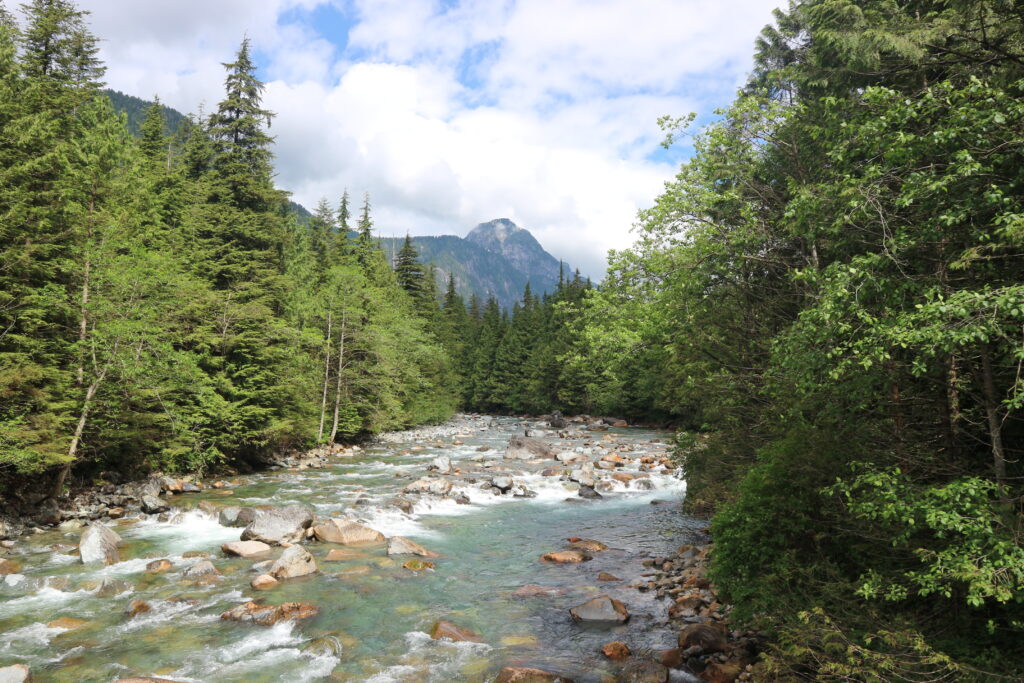
Summary:
Thermodynamic problems such as global warming and heat waves are solvable with the right flow of thermal energy to create balance. We can improve our global energy problems by learning to control and optimize this balance. And the best news is that the technology is already accessible – all we need to get started are some holes in the ground, pipes, pumps, and water.
